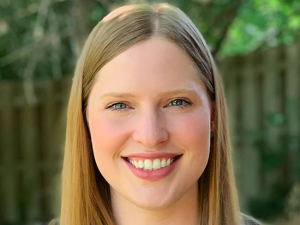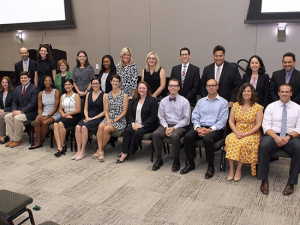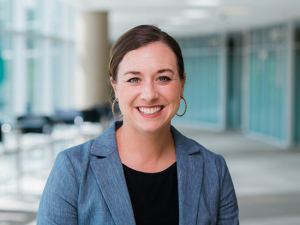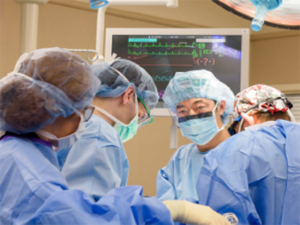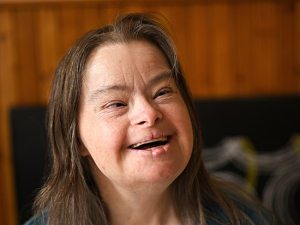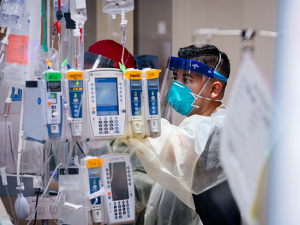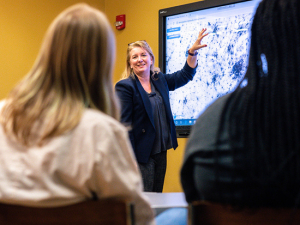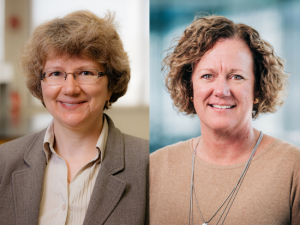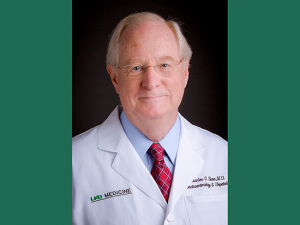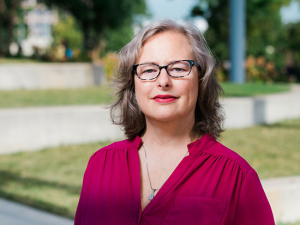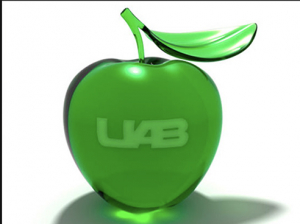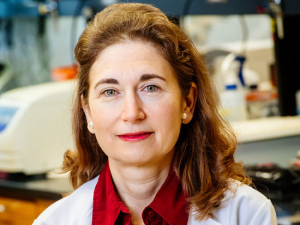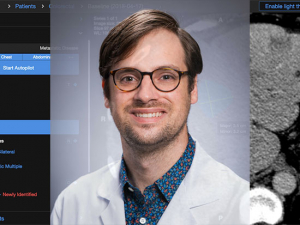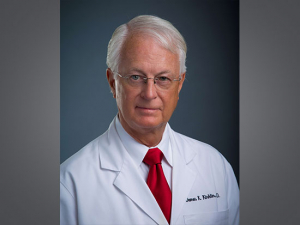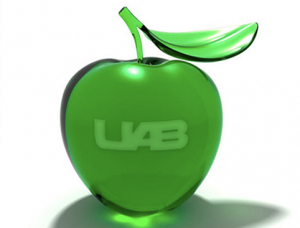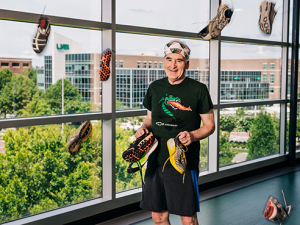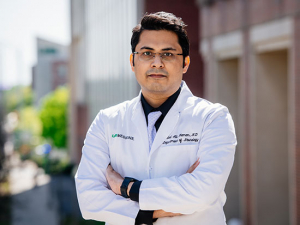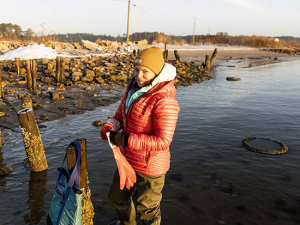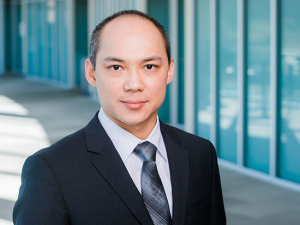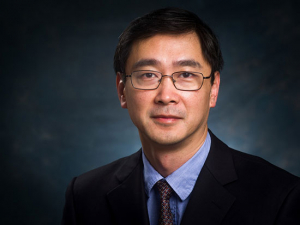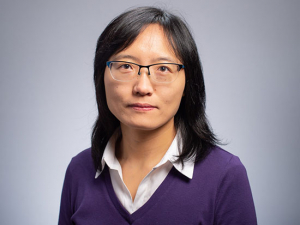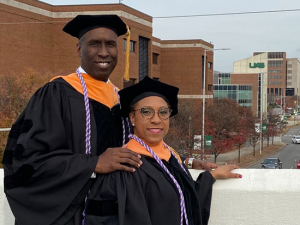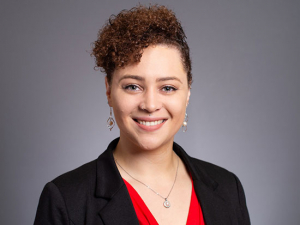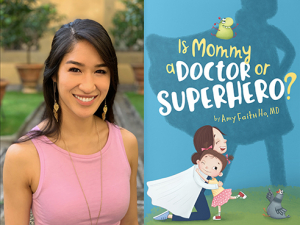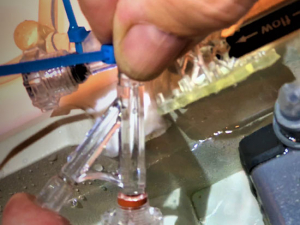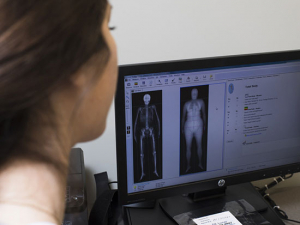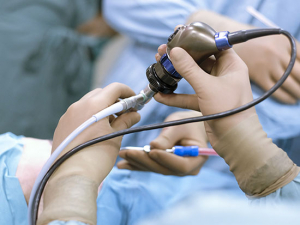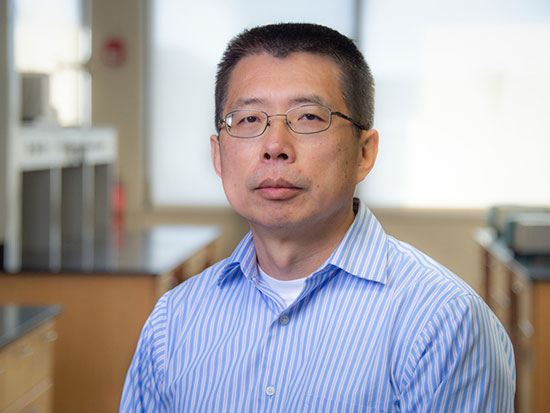 Pengfei Wang, Ph.D., has identified two promising alternatives to the adjuvants used to improve immune responses in modern vaccines.This summer, UAB’s Harbert Institute for Innovation and Entrepreneurship awarded more than $300,000 to faculty and staff with ideas for new products and processes that needed proof-of-concept or early-stage product development support to reach their commercialization potential. Eleven projects received funding of $10,000 to $50,000, made possible by the Regional Innovation Strategies program of the U.S. Economic Development Administration.
Pengfei Wang, Ph.D., has identified two promising alternatives to the adjuvants used to improve immune responses in modern vaccines.This summer, UAB’s Harbert Institute for Innovation and Entrepreneurship awarded more than $300,000 to faculty and staff with ideas for new products and processes that needed proof-of-concept or early-stage product development support to reach their commercialization potential. Eleven projects received funding of $10,000 to $50,000, made possible by the Regional Innovation Strategies program of the U.S. Economic Development Administration.
What are these projects, and who are the inventors behind them? The Reporter met with several grant recipients to learn more about their ideas and their advice to colleagues considering commercialization opportunities of their own.
This week’s project is Optimization of Vaccine Adjuvant Production, led by Pengfei Wang, Ph.D., professor in the UAB Department of Chemistry.
Adjuvants are agents added to vaccines to improve the immune response. They are indispensable elements of modern vaccines, helping to make vaccines more cost-effective because fewer doses are required to generate the needed level of immune response. However, there are only five adjuvants approved by the FDA for use in vaccines, which is limiting modern vaccine development, Wang says. The most potent adjuvant is QS-21, a natural product of Chilean soap bark trees, which only grow in one region of Chile and have a limited supply. Saponins, such as QS-21, are compounds found in various plant species that make foam when shaken with water. Wang has identified two promising alternatives to QS-21, known as VSA-1 and VSA-2, that are found in inexpensive and readily available natural sources.
With the Regional Innovation Strategies grant funding, Wang’s lab will optimize the production of these vaccine adjuvants and conduct safety and toxicity studies to prepare for clinical testing.
| “After many years of hard work with support from NIH and UAB, we eventually have some new products with promising adjuvant properties. I want to commercialize them and make them available to the vaccine research community and vaccine industry for further studies and applications.” |
Where did your idea come from?
“My interest in saponin-type vaccine adjuvants originated from my postdoctoral experience of synthesizing naturally occurred QS-21, which is a potent immunostimulant used in the clinic now,” Wang said. “However, QS-21 has some drawbacks. We have conducted extensive structure-activity-relationship studies, which lead us to potential QS-21 alternatives: the VSA vaccine adjuvants.”
What problem does it solve?
“Our VSA adjuvants solve the problems that limit QS-21. The VSA adjuvants are derived from a different natural source than QS-21, and they are much more affordable. They are more chemically stable and less toxic than QS-21.”
How long have you been thinking about this idea?
“We have been working on saponin-type vaccine adjuvants since 2011.”
What factors convinced you to move forward into commercialization?
“After many years of hard work with support from NIH and UAB, we eventually have some new products with promising adjuvant properties. I want to commercialize them and make them available to the vaccine research community and vaccine industry for further studies and applications.”


